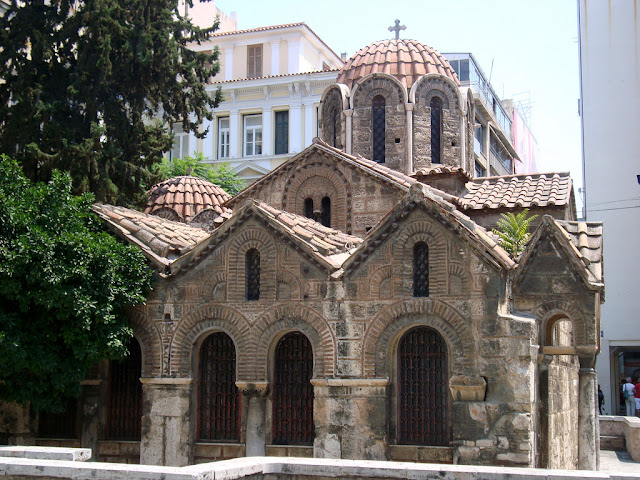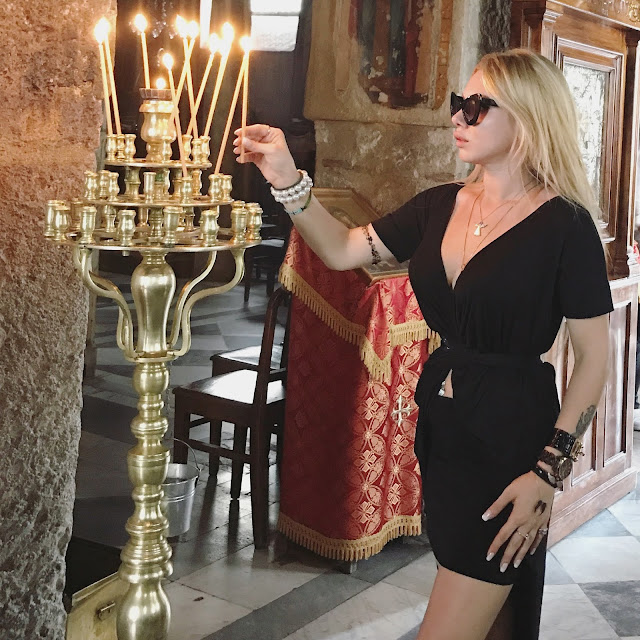The church of Panagia Kapnikarea is one of the oldest temples in Athens and admittedly one of the most significant Byzantine edifices. Sources conclude that it was built in the early 11th century (around 1050) on the former location of an ancient temple that was dedicated either to goddess Athena or Demeter, following the tradition of other early Christian churches. The church is located in the middle of the city’s most lively and crowded downtown street, Ermou, on the way from Syntagma to Monastiraki square and is one of the most typical Athenian monuments.
The church is dedicated to Panagia (The Virgin Mary) and has a rather unusual name. “Kapnikarea” is suspected to have been attributed whether from the Byzantine tax “kapnikon” or from the last name of the tax collector (Kapnikares) who was responsible for the church. The name might also derive from the word “kapnismeni” (meaning “smoked” in Greek), due to the marks of fire that are evident on the building. There are also other popular names such as “Kamoucharea” or “Chrisokamouchariotissa”. During the 19th century, is was also known as “Panagia of Prentzas”, after the last name of the great donor. The architectural structure of Kapnikarea is rather distinctive; it is a multifaceted edifice, that is constituted by three different parts; the main church at the southern part, which is dedicated to the Virgin Mary and is suspected to be the katholikon of a monastery; the chapel dedicated to Agia Varvara at the northern part; and the exonarthex at the western side. Regarding its interior, there are certain preserved illustrations, while major restoration work and new iconography has been done by the famous agiographer Fotis Kontoglou. The church was planned to be demolished during the reign of King Otto, as it was not included in the urban designs of his architect, Leo von Klenze -however it was saved after the intervention of the King of Bavaria, Ludwig. Nowadays, although tormented by centuries of history, the church belongs to the University of Athens and continues to stand out as a unique part of the city’s history.




